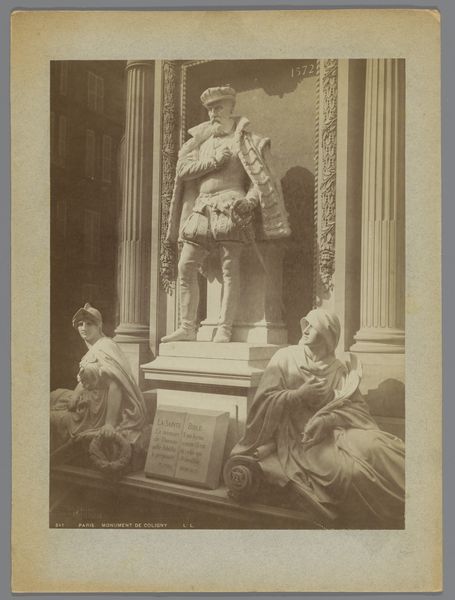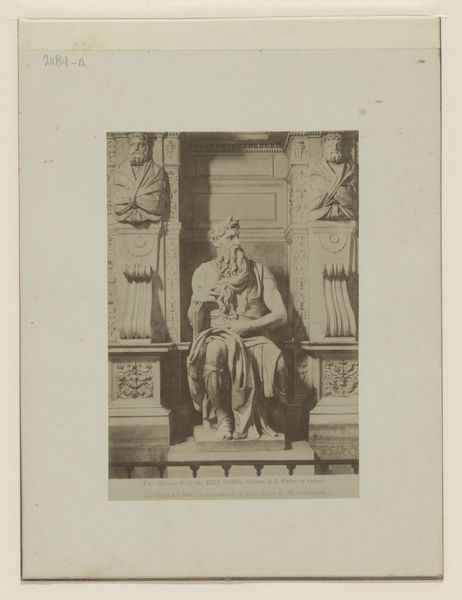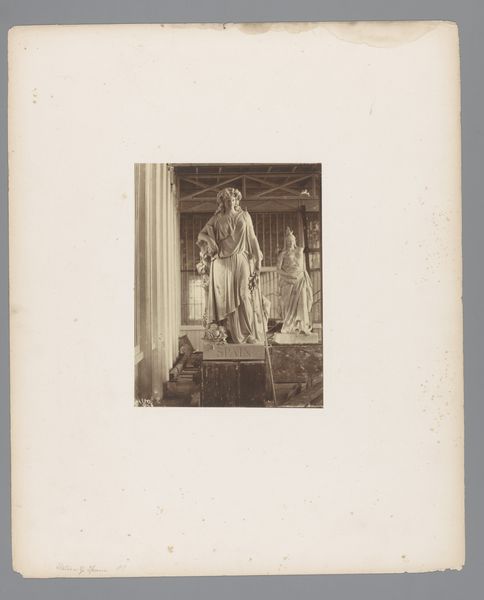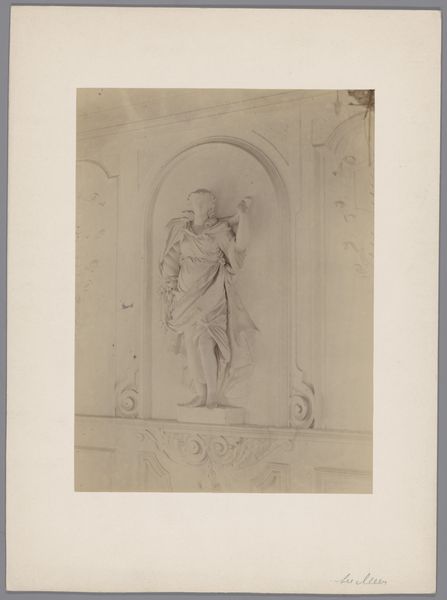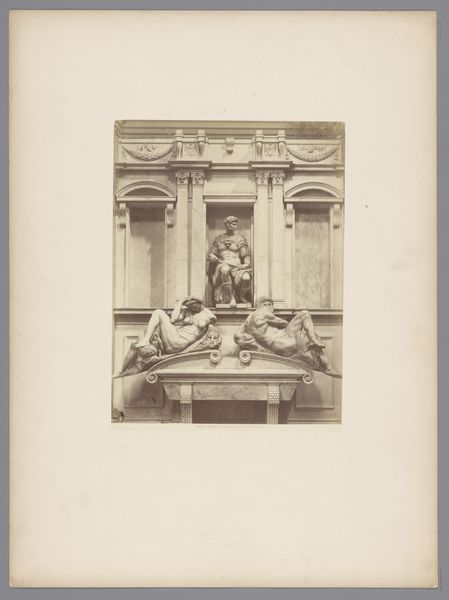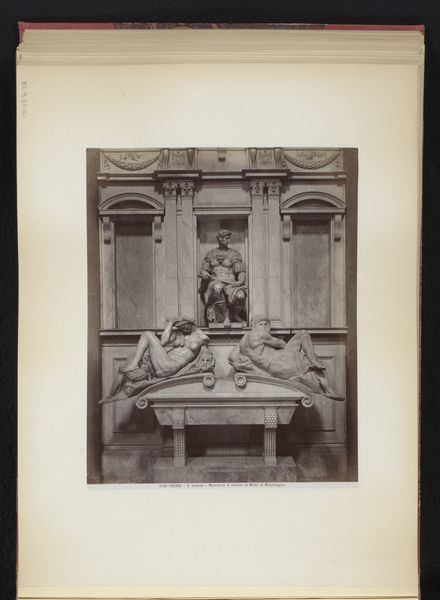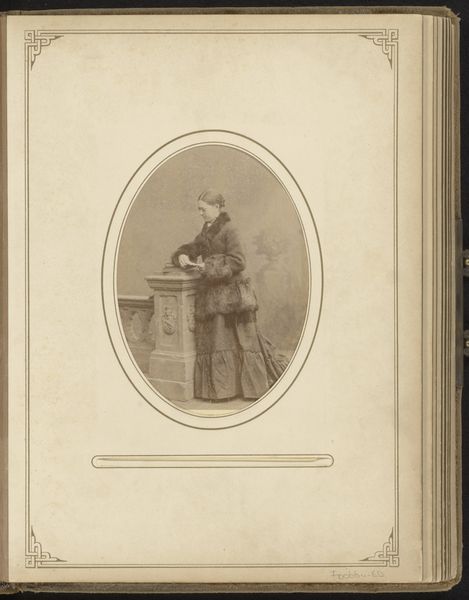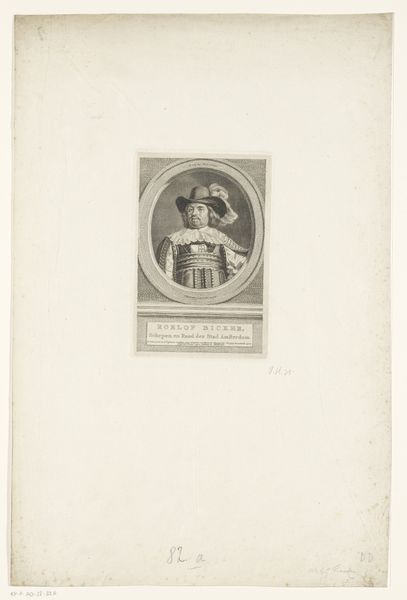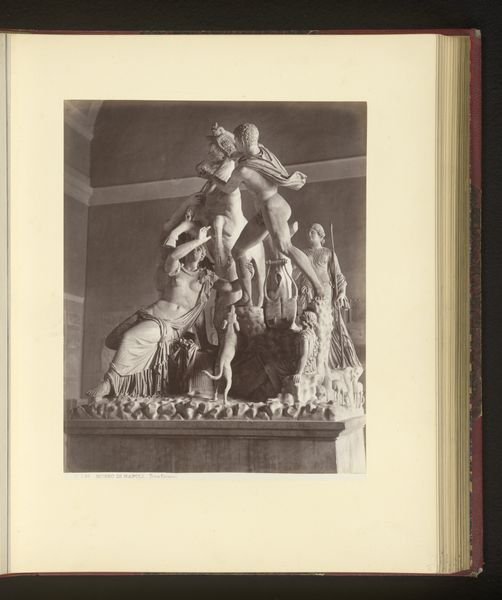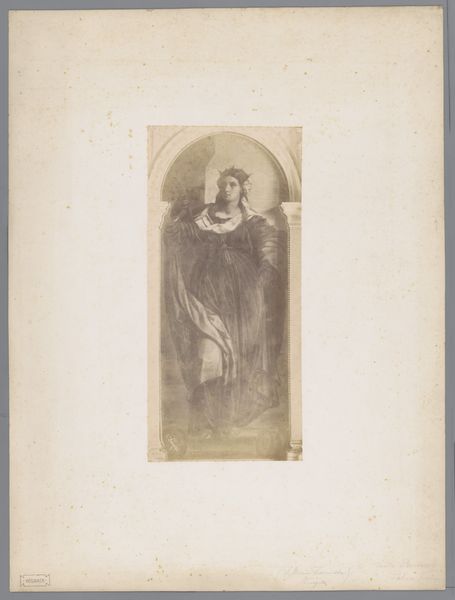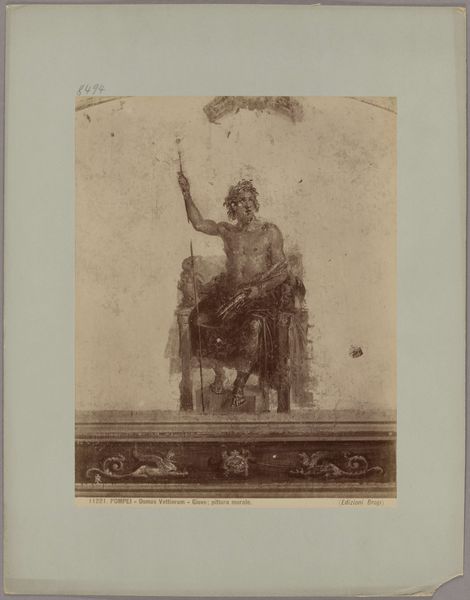
Dimensions: height 279 mm, width 223 mm, height 444 mm, width 325 mm
Copyright: Rijks Museum: Open Domain
Curator: This gelatin-silver print, simply titled "Monument de Coligny, Parijs, Frankrijk," was created sometime after 1824 by Lèon & Lèvy. My first impression is somber, almost spectral. There's a muted quality to the tones that gives the scene a distant feel. Editor: Agreed. The sepia tones certainly lend it a gravitas. Tell me more about Coligny. Curator: Gaspard de Coligny was a prominent Huguenot leader during the French Wars of Religion, assassinated during the St. Bartholomew's Day Massacre in 1572. This monument, neoclassical in its architectural style, obviously serves as a symbolic statement. Coligny's legacy as a martyr and champion of religious freedom clearly shaped how this monument was conceived and then presented in print form for wider circulation. Editor: The composition is interesting. Coligny stands central, framed by what seems like a classical facade. And those figures seated at the base—melancholy, draped… they recall allegorical representations of mourning. Note how they direct your eye to the memorial. There's definitely a careful control of visual elements here. The printmaker has definitely focused on clear line work, using it to focus the viewer's attention. Curator: Exactly. Photography in the 19th century played a huge role in memorializing and disseminating images of monuments, making public spaces and national heroes accessible. Reproducing Coligny’s monument meant engaging with complex issues like religious tolerance, national identity, and the legacy of conflict. Its distribution assisted in solidifying ideas related to Neoclassicism at this time. Editor: What strikes me are the geometric forms; see the verticals of the columns offset against the horizontals of the steps. The central figure interrupts those perfect geometries. Curator: Precisely! A powerful interruption representing, perhaps, Coligny's interruption of societal norms? I see the social, religious, and political complexities converging within this singular photograph of public art. It's more than just documentation; it's an act of interpretation and advocacy. Editor: From my perspective, it shows how formal arrangements like composition, tonal range, and even photographic process underscore a very calculated engagement between the monument and its beholders. There is no room for casual engagement here. Curator: An effective point and wonderful way to highlight that this image acts not just as a historical record, but also, even today, as an intriguing cultural object that opens the space for further questioning of collective memory. Editor: Indeed, considering the sharp lines against the sepia wash of color allows you to reflect not just on the past, but our distance from it as well.
Comments
No comments
Be the first to comment and join the conversation on the ultimate creative platform.
